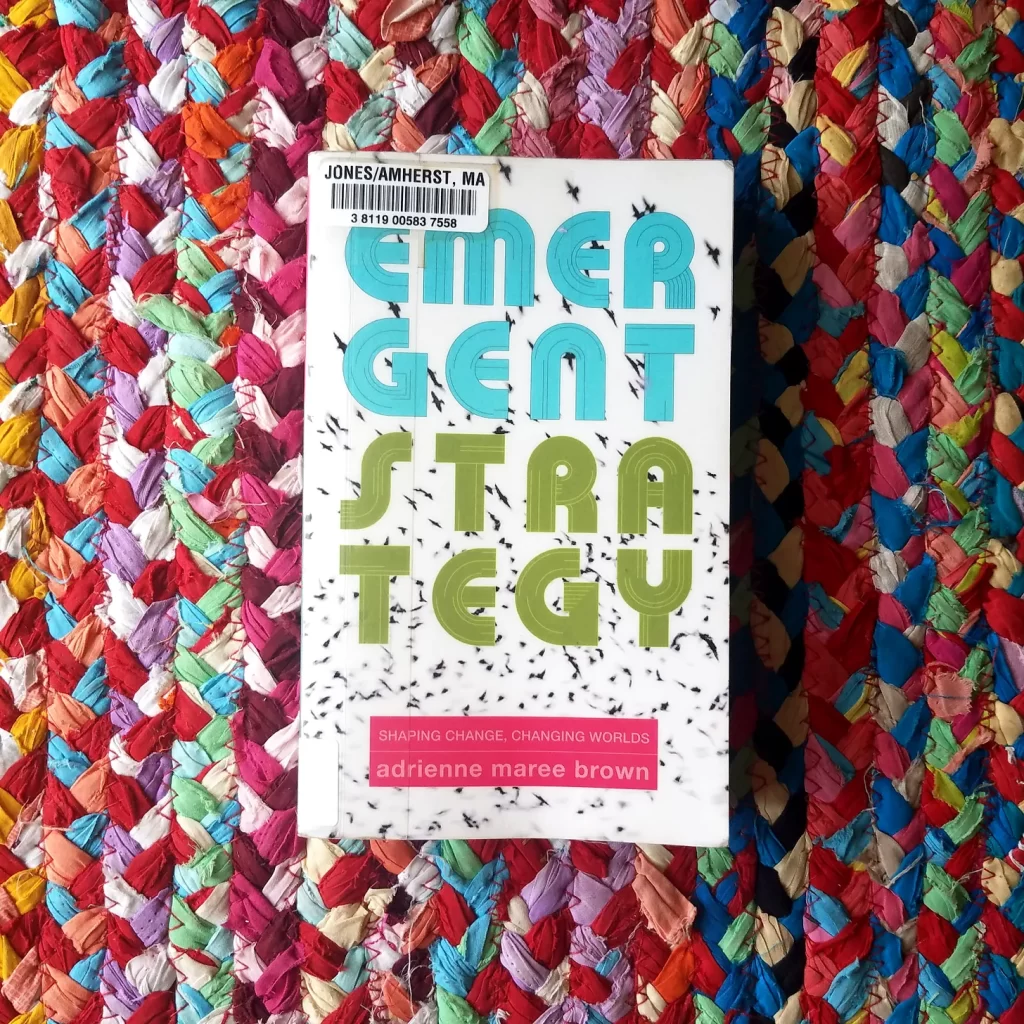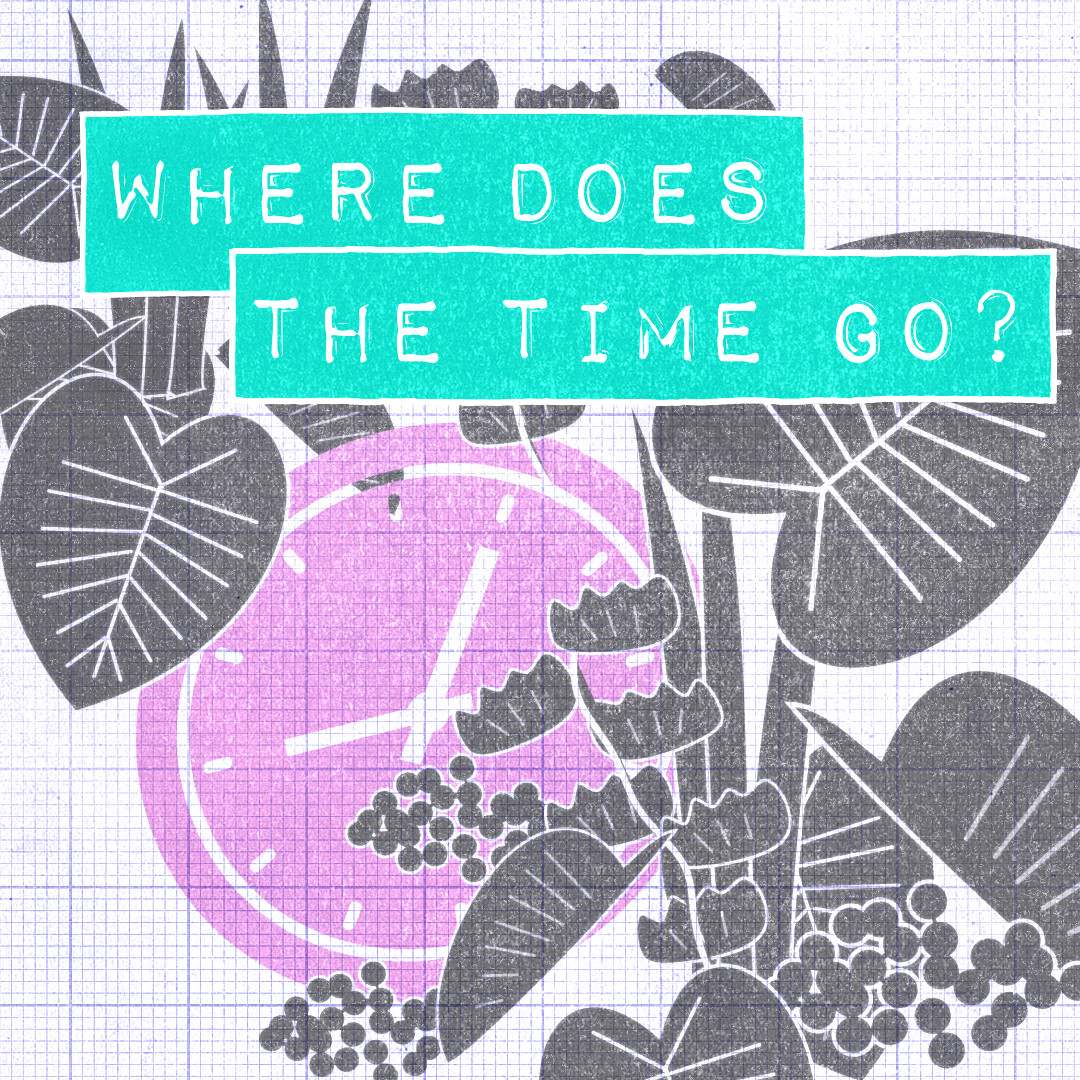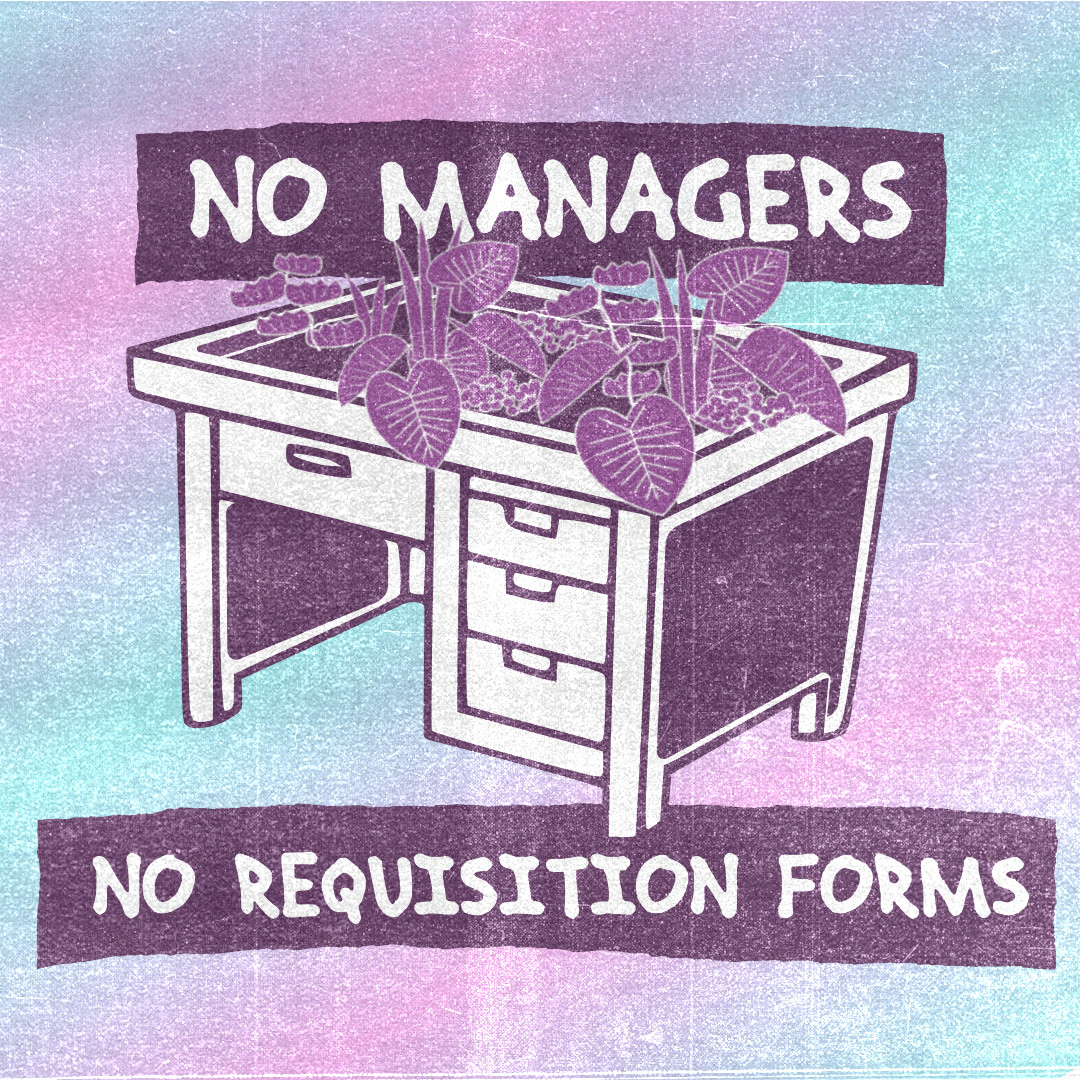A book worth reading: adrienne maree brown’s Emergent Strategy
I love this book because it is a poetic self-help book for people, organizations, and the whole of society that lives at the meeting point of social justice, complexity science, and Afro-futurist science fiction.
I keep coming back to this book. I’ve checked it out so many times from the local library that I don’t need to look it up any more— I can go straight to the shelf. It’s probably time to buy my own copy.
adrienne maree brown wants to help us live lives and create organizations that embrace liberation and possibility at every level. In Emergent Strategy, she takes systems from the natural world as metaphors and models of what this could look like. Jumping off from complexity science, the ideas of Grace Lee Boggs, and the writings of Octavia Butler, brown is especially interested in how small-scale actions and interactions can become larger structures, the value of adaptable networks, and the importance of a encouraging great variety of inter-meshed dreams.
Here are three examples of her natural metaphors/models. What lessons could we learn from each? How could an organization or movement develop similar characteristics?
Mycellium. The root-like structure of fungus, mycellium grow in extensive interconnected networks underground. They turn toxins into food and are ready to sprout mushrooms when the conditions are right.
Starlings. They form flocks of thousands of birds that create beautiful, elaborate, flowing patterns, without any planning or direction from leaders.
Dandelions. With joyful flowers and hard to pull roots, these plants spread with seeds borne by the wind. Every part of the plant is a source of food or medicine.
A better world is possible. Subscribe to learn how to build it!
Emergent organizations
On its face, this is a book about organizational strategy. It describes a deeply grass-roots way of organizing social movements that focuses on relationships, rather than leaders, on adaptation and resilience, rather than reaction, and on connections, rather than growth and competition. In brown’s vocabulary, these organizations are (or could be) fractal, adaptive, decentralized, iterative, and dedicated to creating possibilities. It’s about trying to create organizations that embody justice and liberation at every level and in all their activities. You don’t have to look far into the world of non-profits to find organizations that don’t internally reflect the ideals that work toward externally. I really appreciate this guide to another way.
She lists some core principles that give a sense of what emergent strategy looks like (directly quoting):
- Small is good, small is all.
- Change is constant.
- There is a conversation in the room that only these people at this moment can have. Find it.
- Never a failure, always a lesson.
- Trust the People. (If you trust the people, they become trustworthy).
- Move at the speed of trust. Focus on critical connections more than critical mass– build the resilience by building the relationships.
- Less prep, more presence.
- What you pay attention to grows.
Radical self/world help
The book instantly overflows the bounds of an organizational guide/leadership book. It extends into the personal and social levels. It is ultimately about how humans can be in right relation with each other, which given the state of things, requires healing on multiple levels.
Outlining these ideas for movement organizing also involves outlining a vision for a just world. They become not so much an outline or end goal, as much as a direction.
Emergent Strategy is also personal. It reflects brown’s journey to bring these goals into focus and to apply them in her own life and work. She describes herself as “an auntie, sister, daughter, woe, writer, facilitator, coach, mentor, mediator, pleasure activist, sci-fi scholar, doula, healer, tarot reader, witch, cheerleader, singer, philosopher, queer Black multiracial lover of life living in Detroit.” This book draws on all of those identities and areas of expertise.
In the end, brown describes a whole way of being with other people. And for most people (all?), to do it right involves a lot of personal work. It involves recognizing where rigid ideas, learned behavior, past hurts makes it harder to connect, listen, or adapt. brown includes self-development exercises to help readers along the way.
Even that just scratches the surface. You’ll also find poetry, spells, facilitation techniques, interviews, and self-assessment tools.
All of this adds up to a compelling vision for how people can organize themselves and some deep and practical advice for moving in the right direction (in the right way).

Have you read this book? What did you think? Are there ideas that stood out to you?
I’d love to hear from you. What’s your vision for a living world? What projects and ideas are you excited about? What topics do you want to see here? What am I missing? Let me know in the comments.




